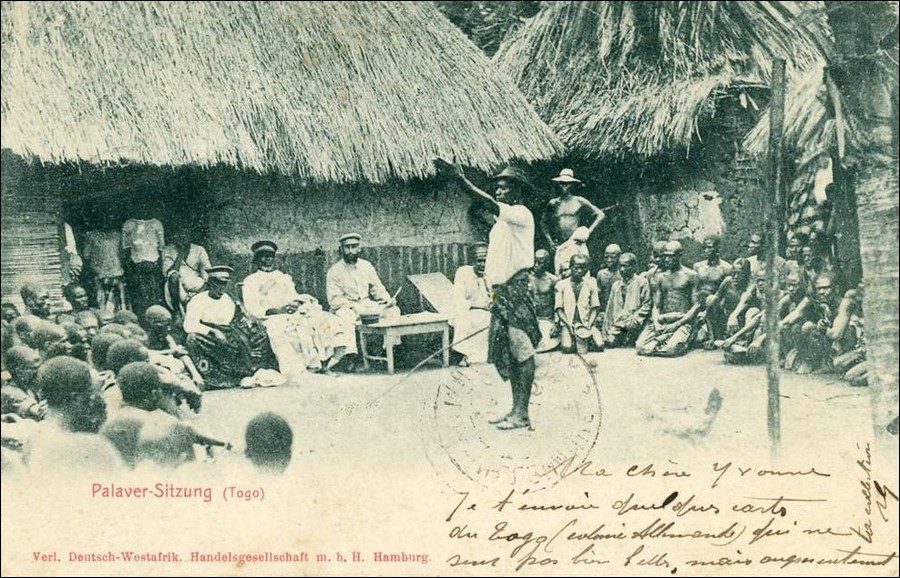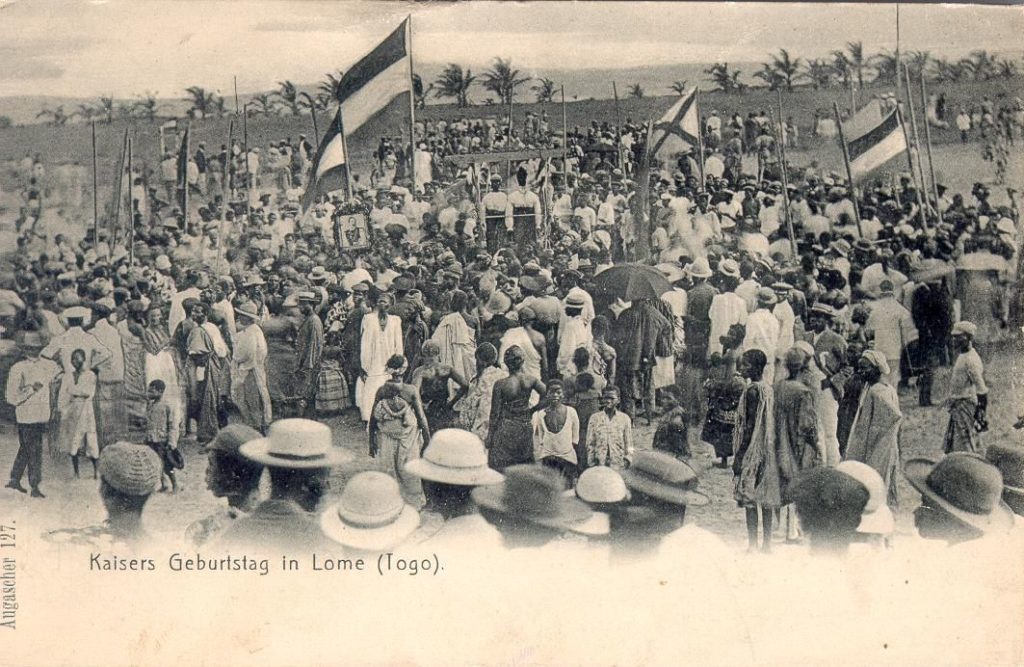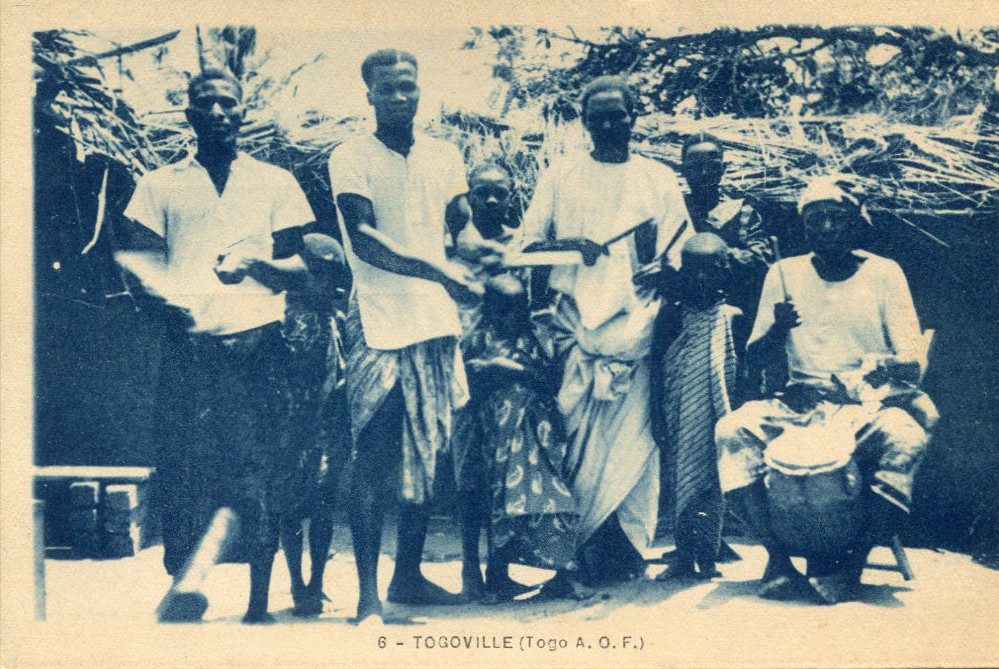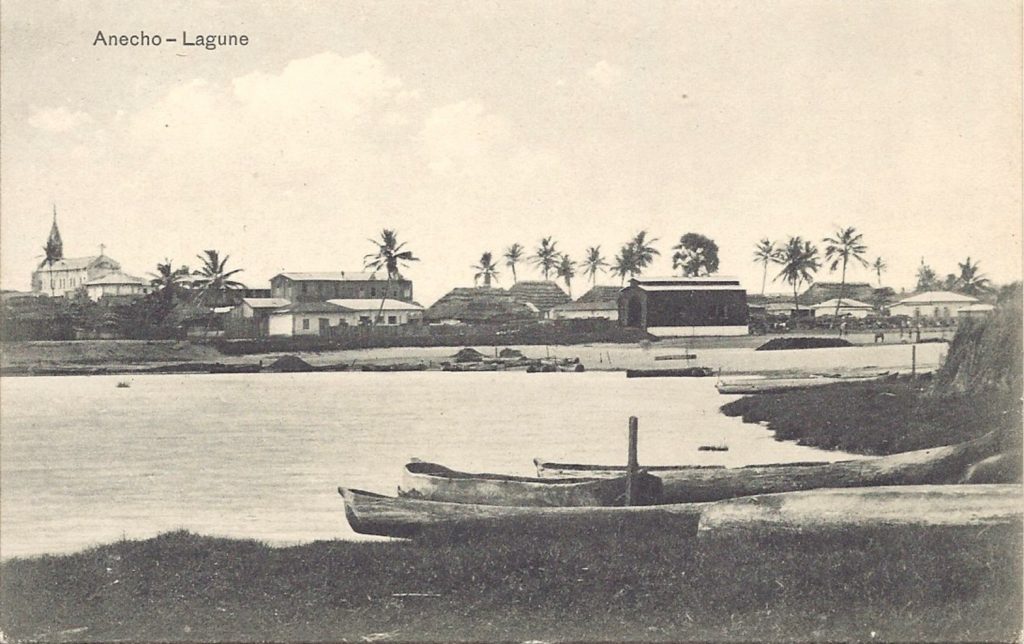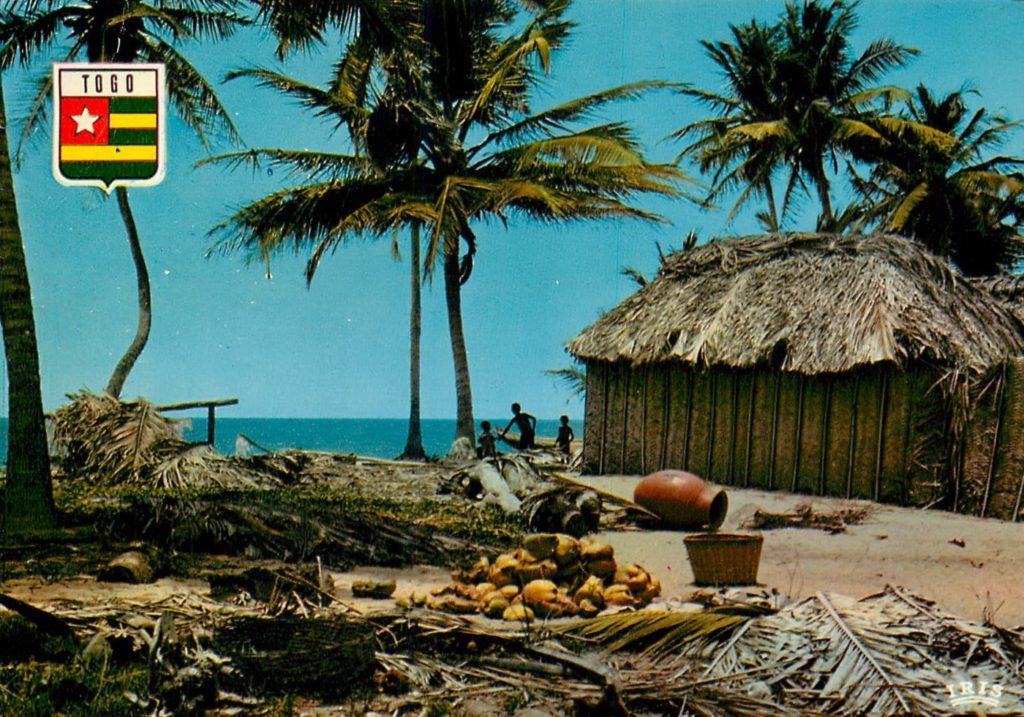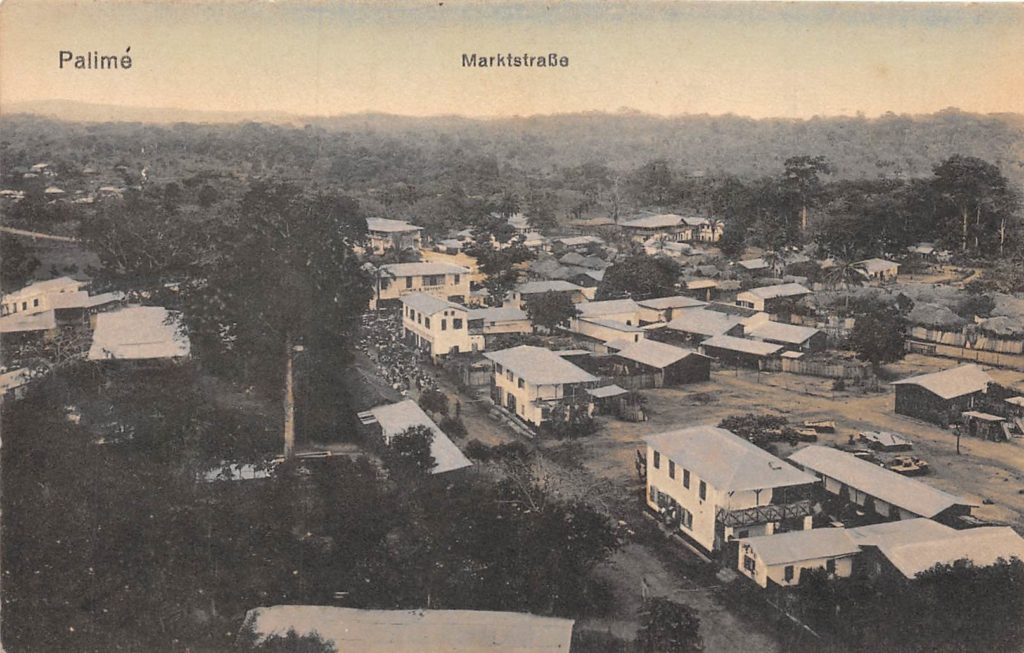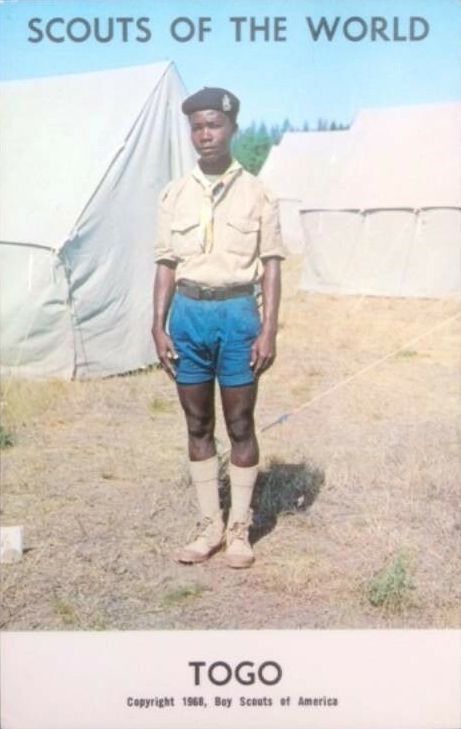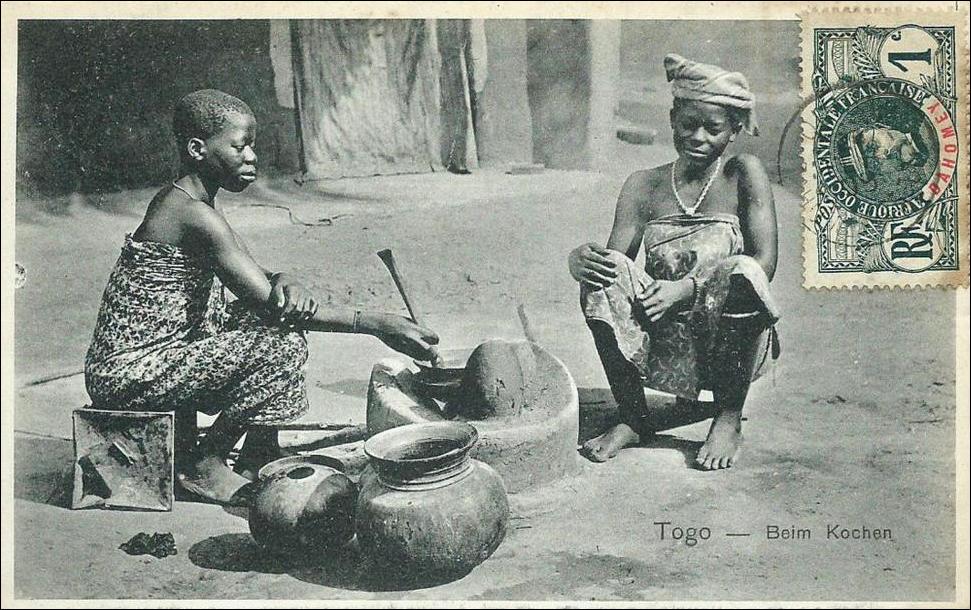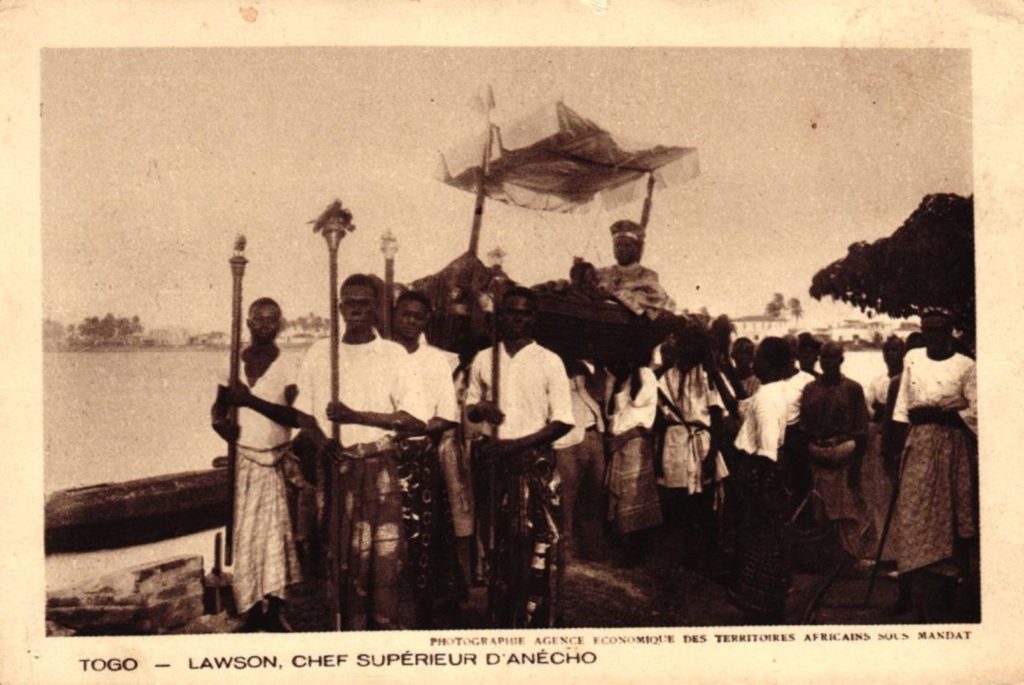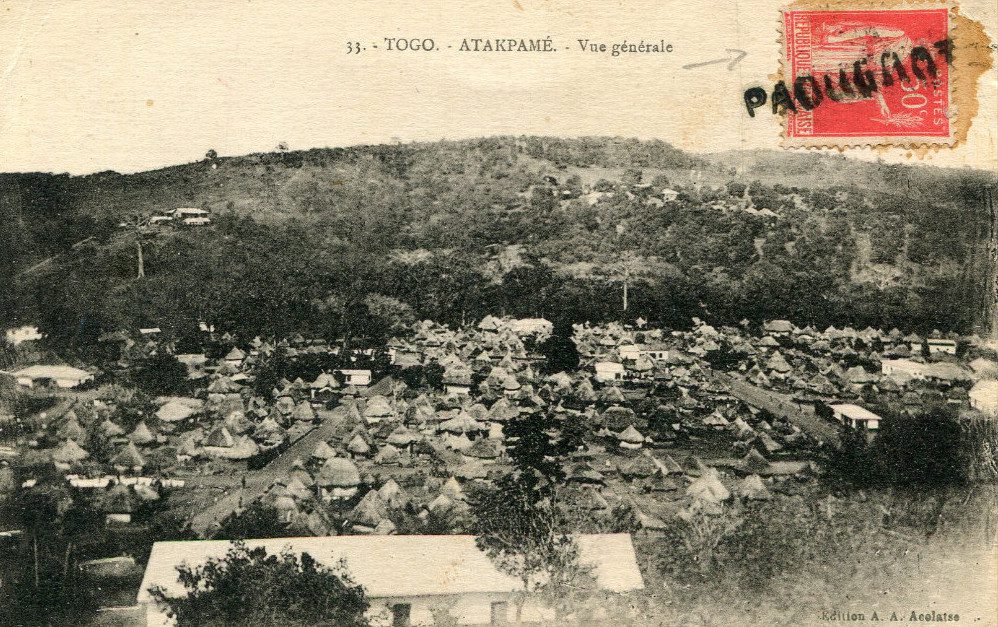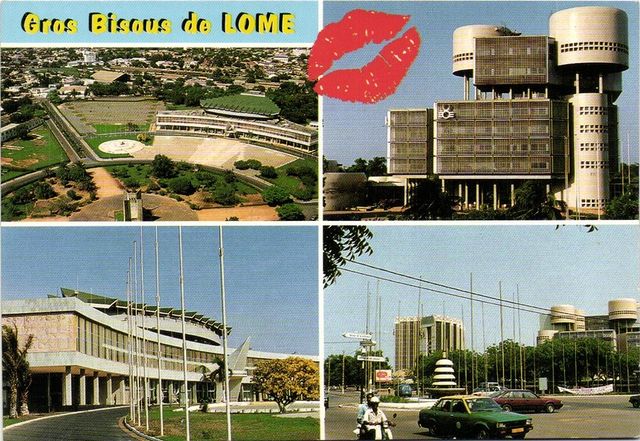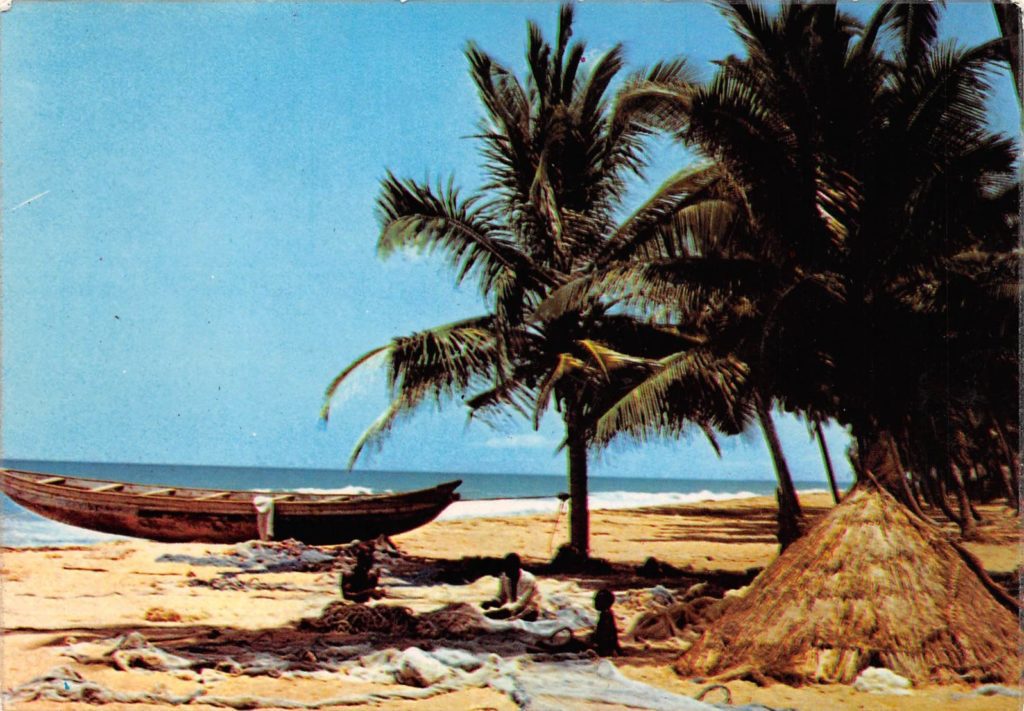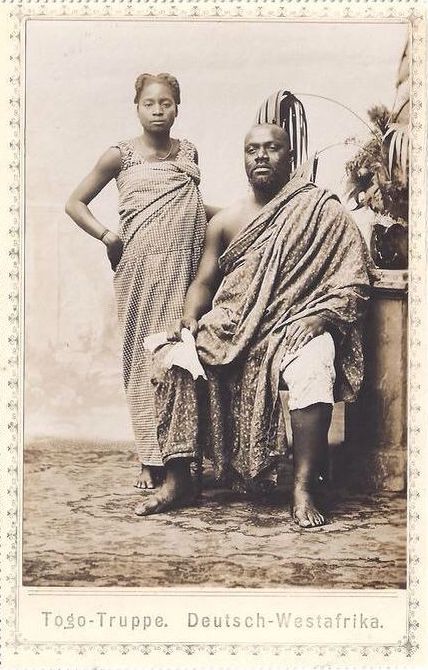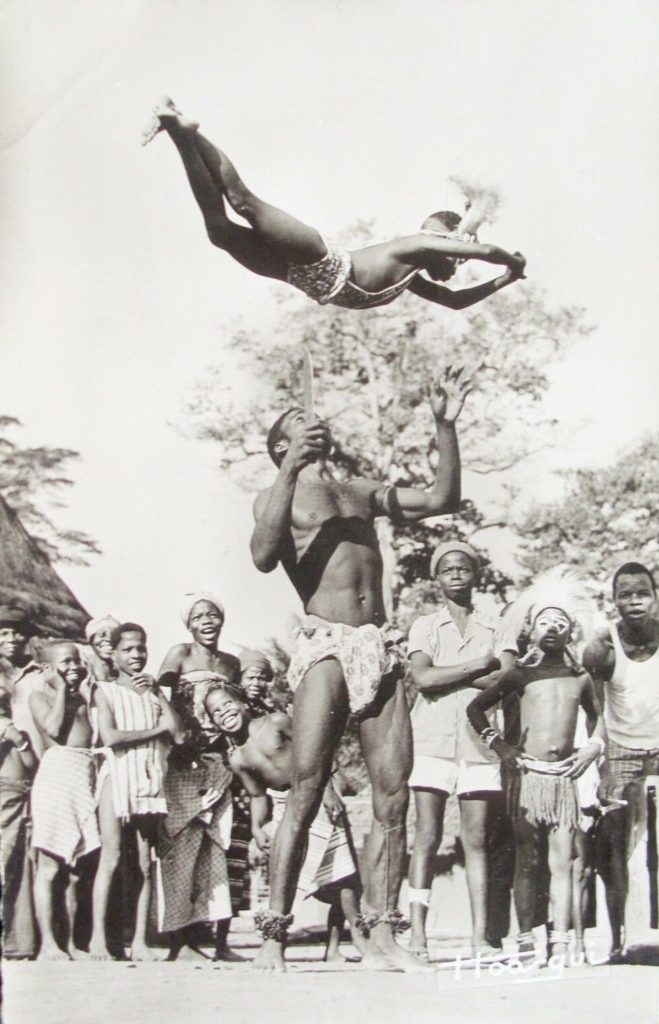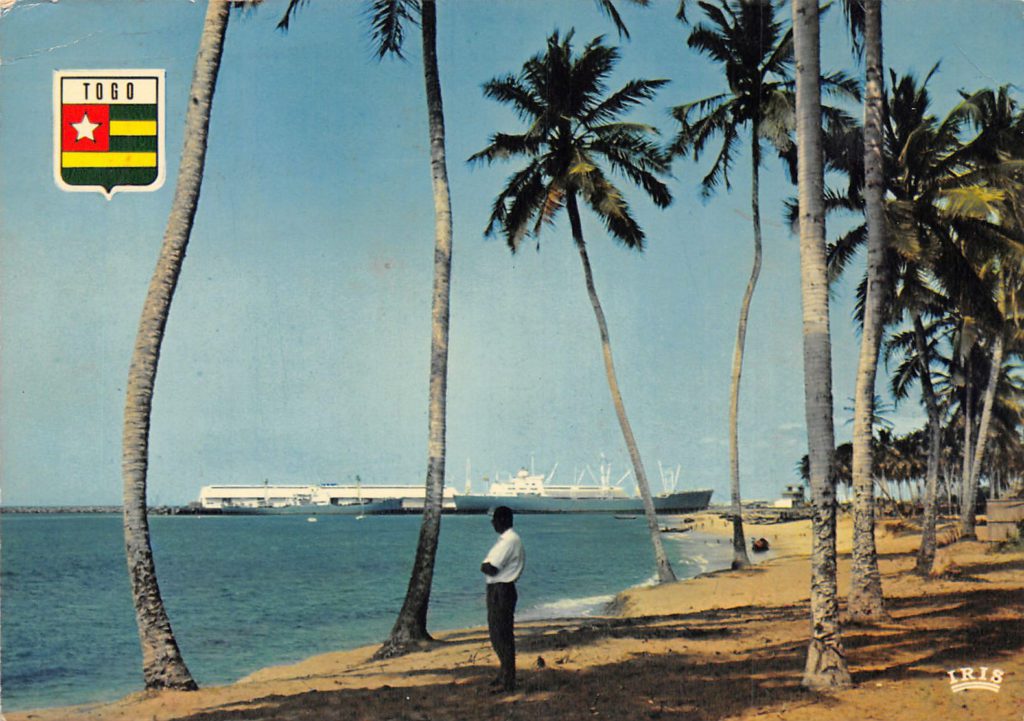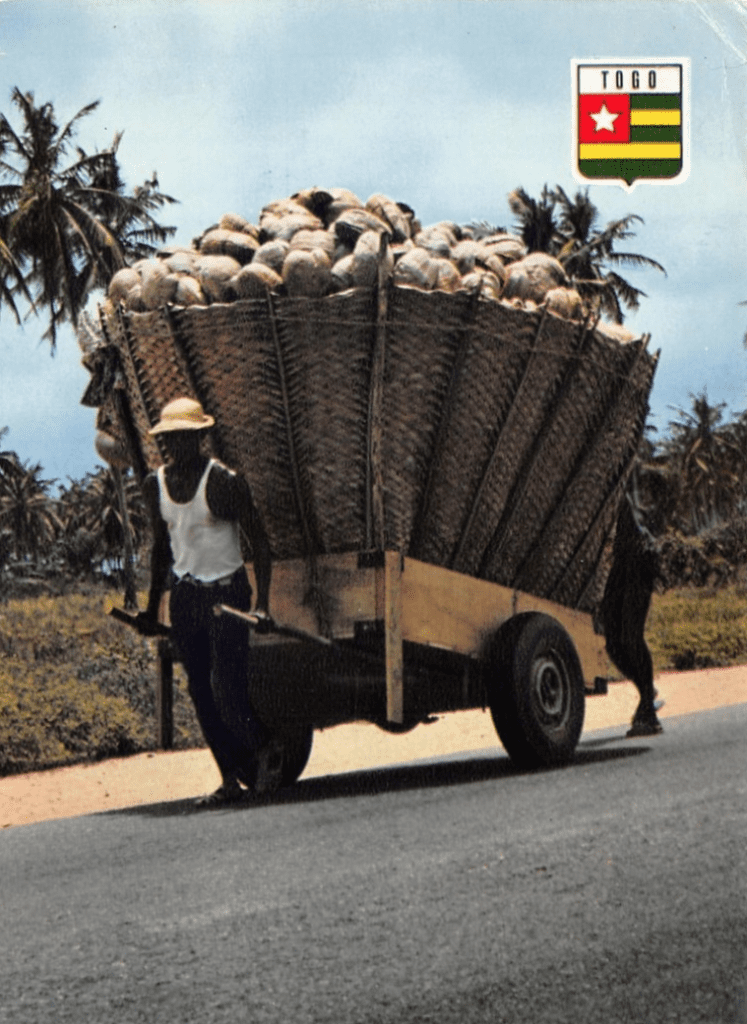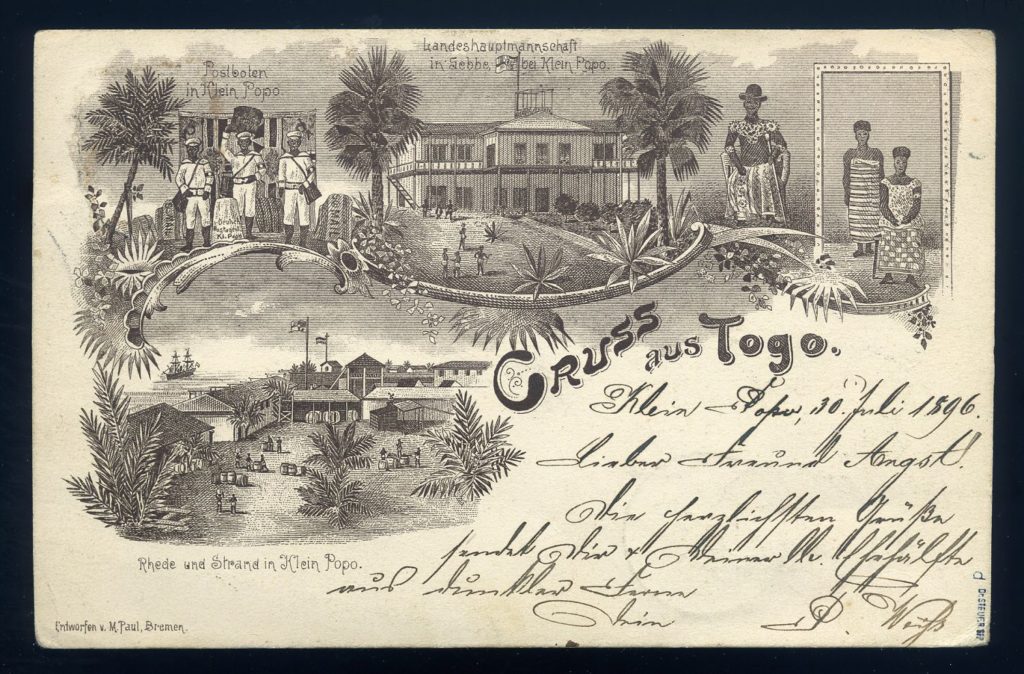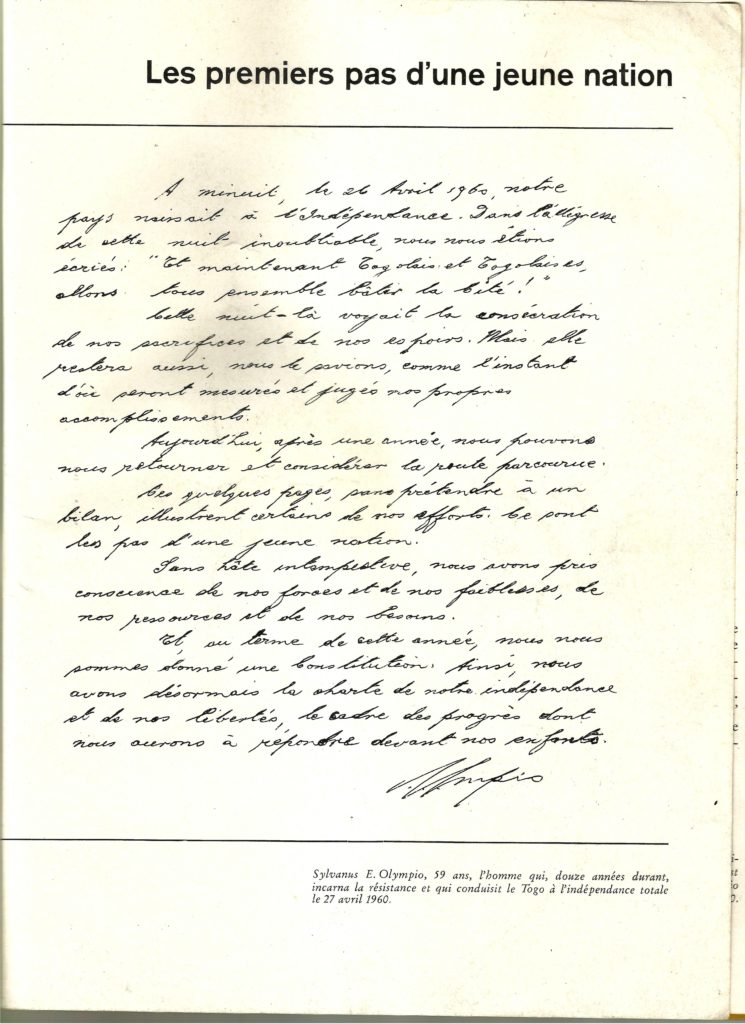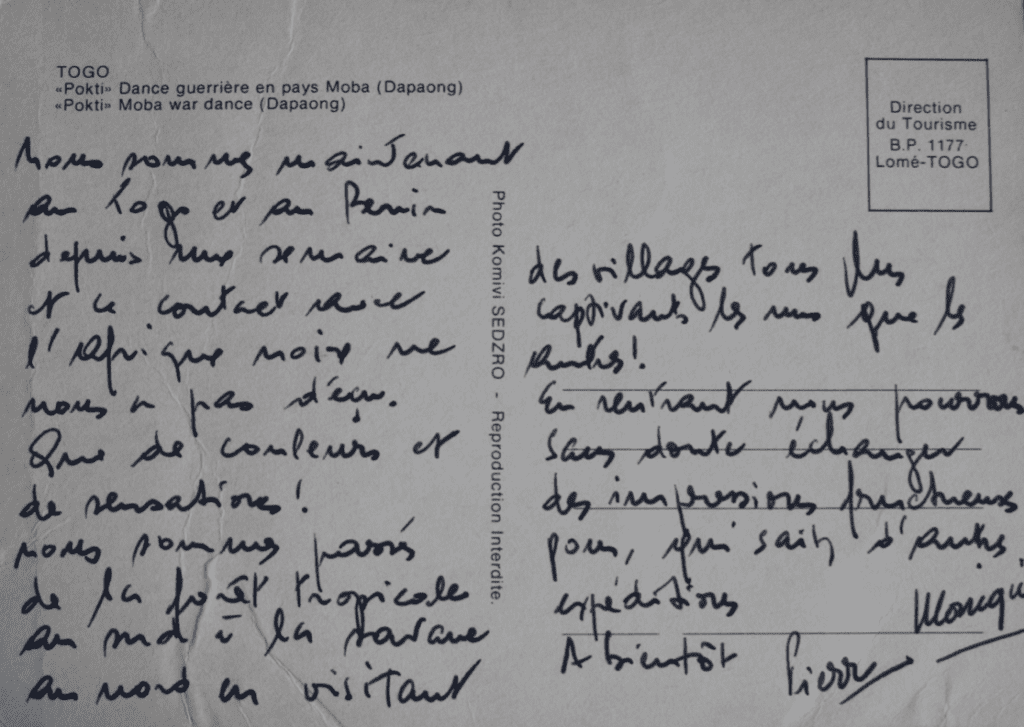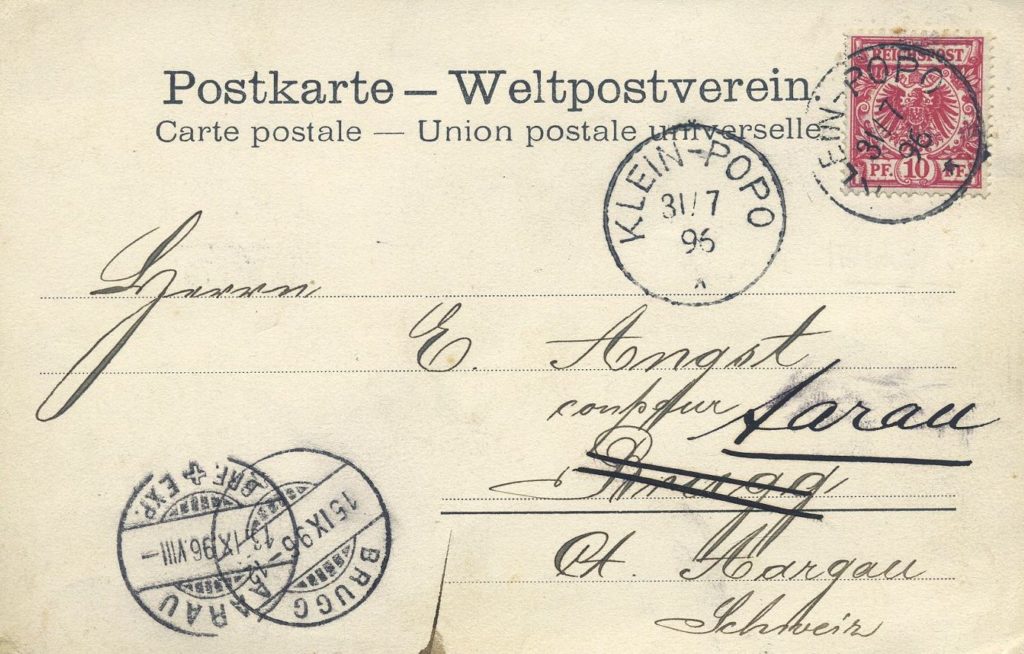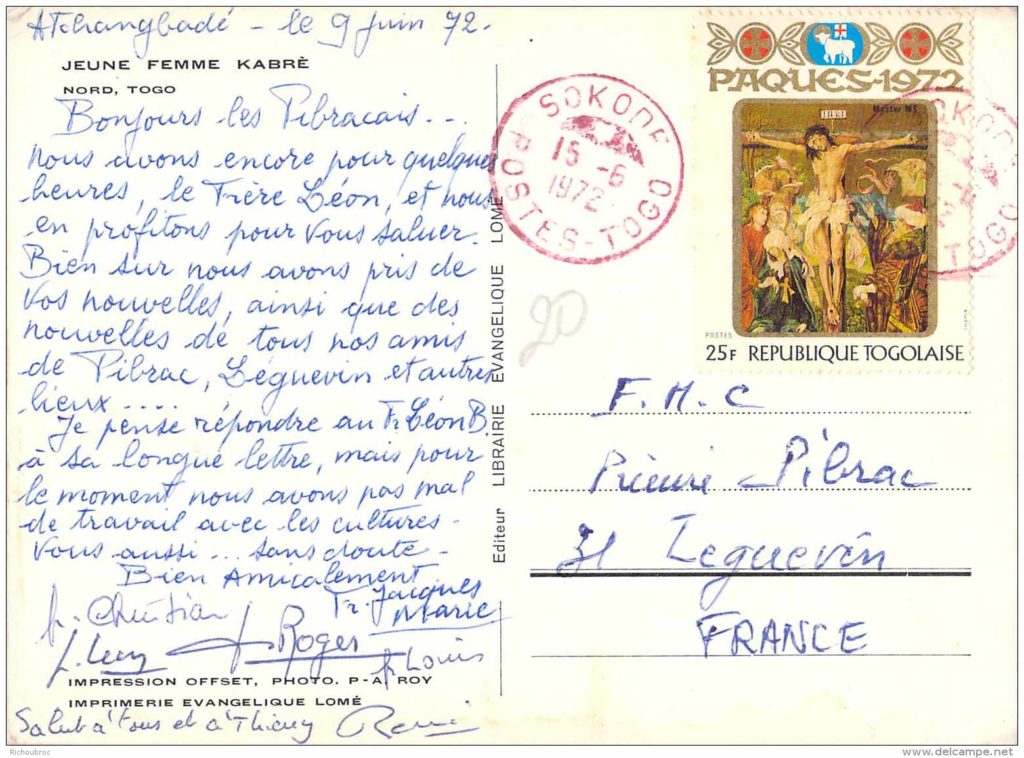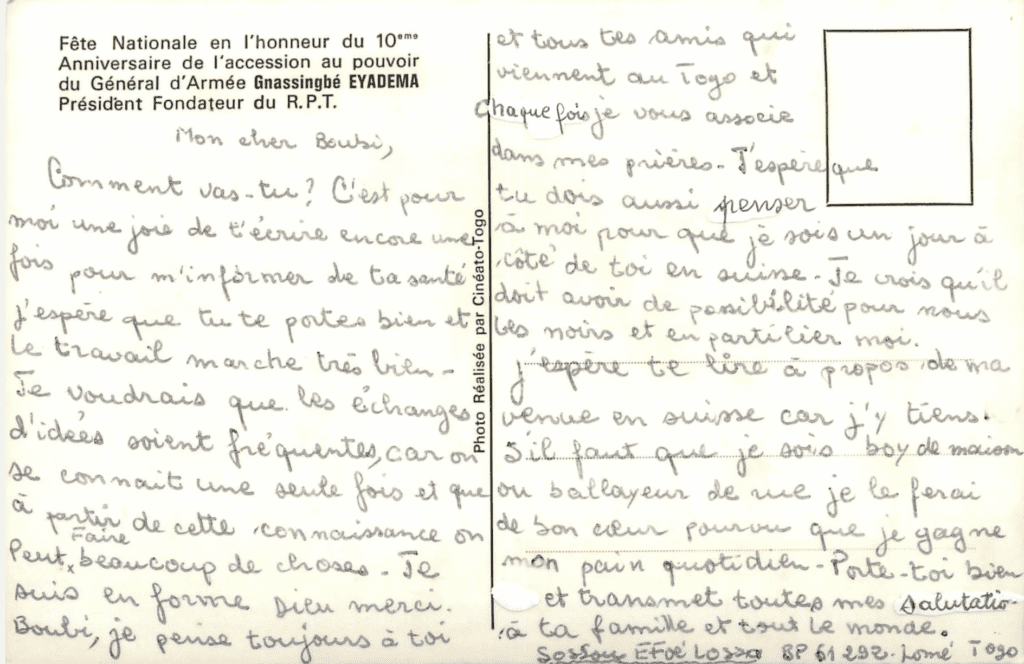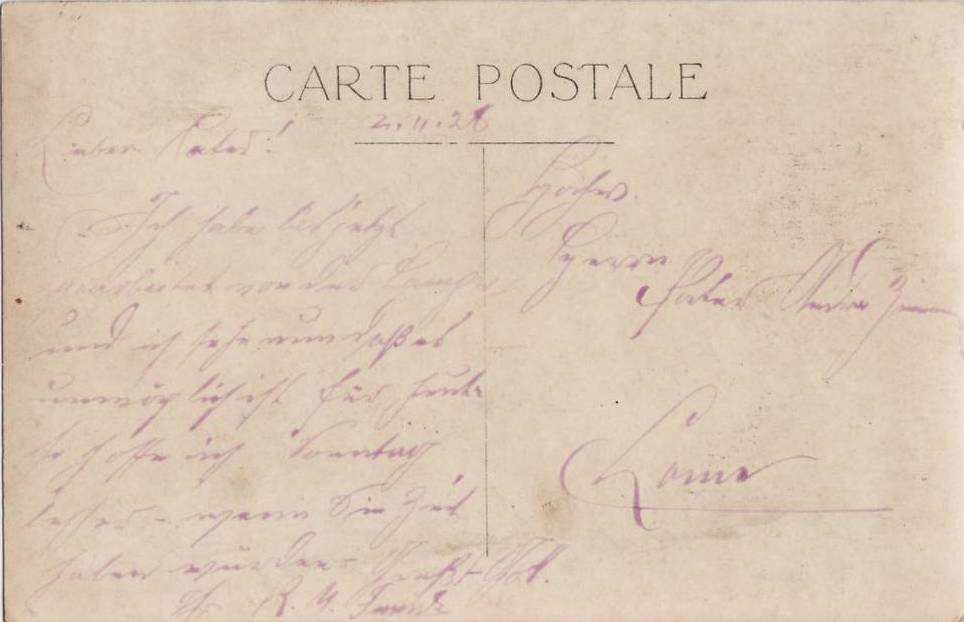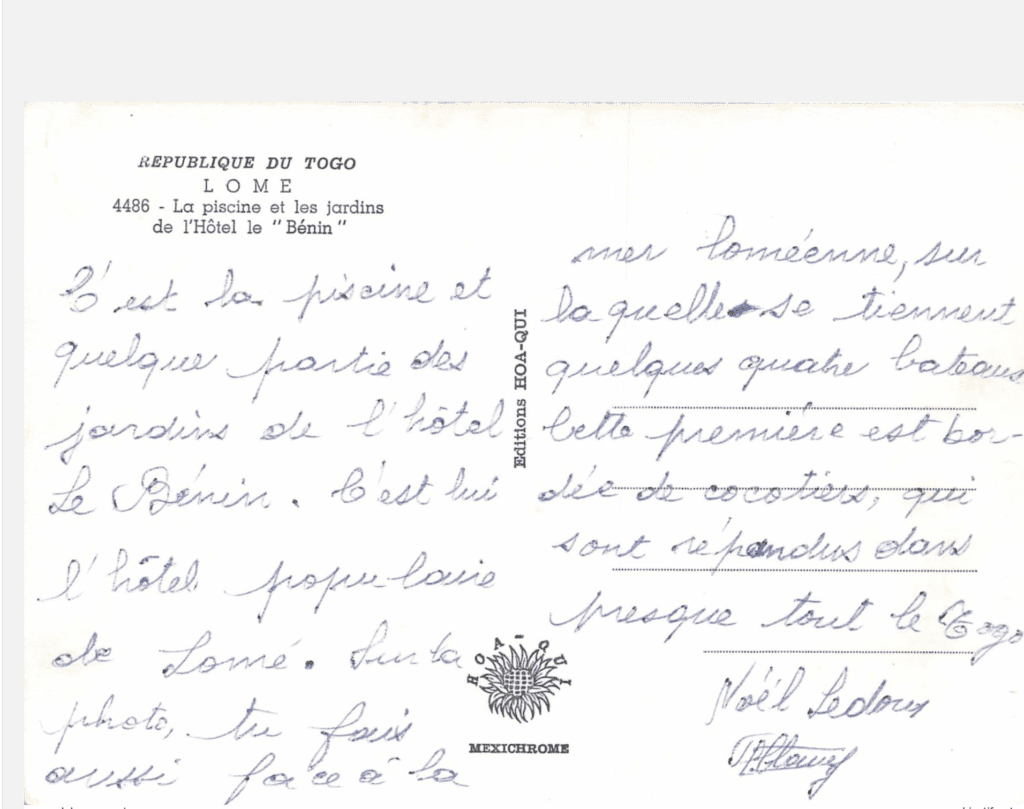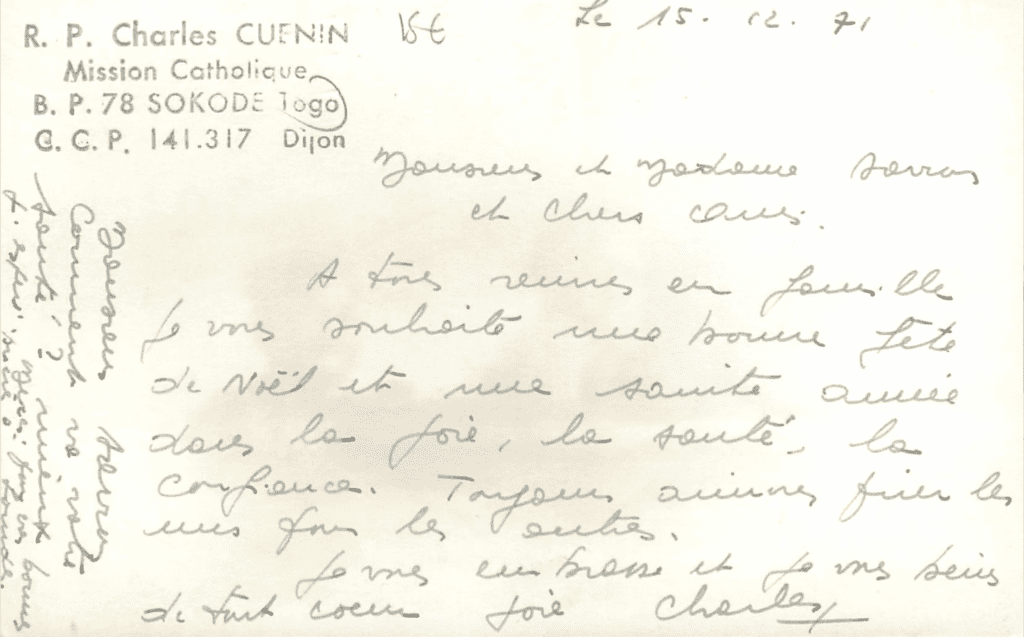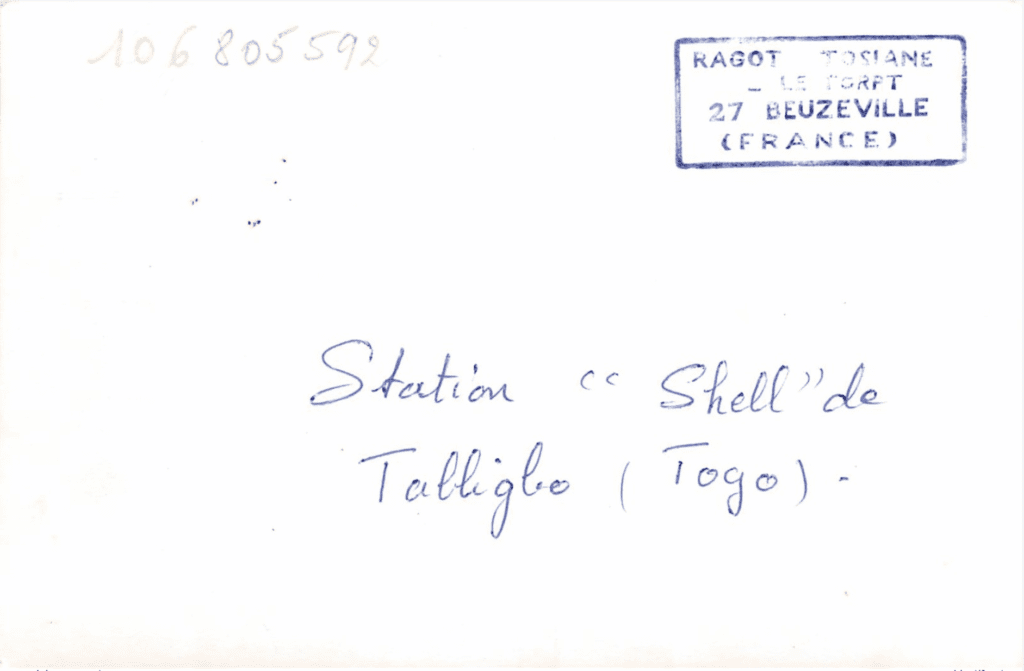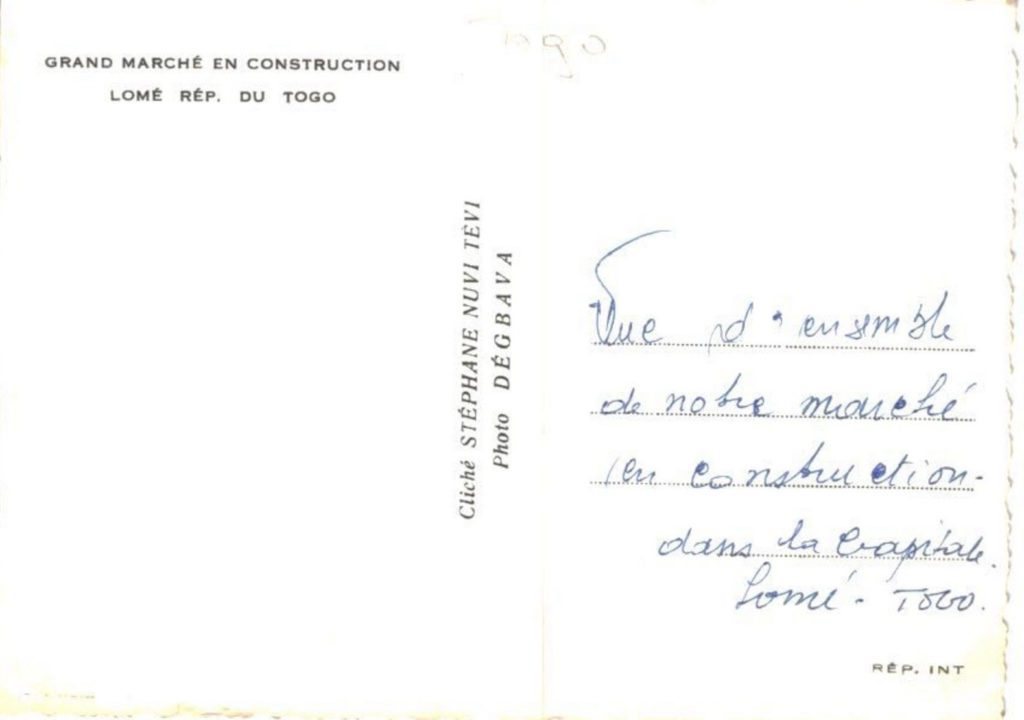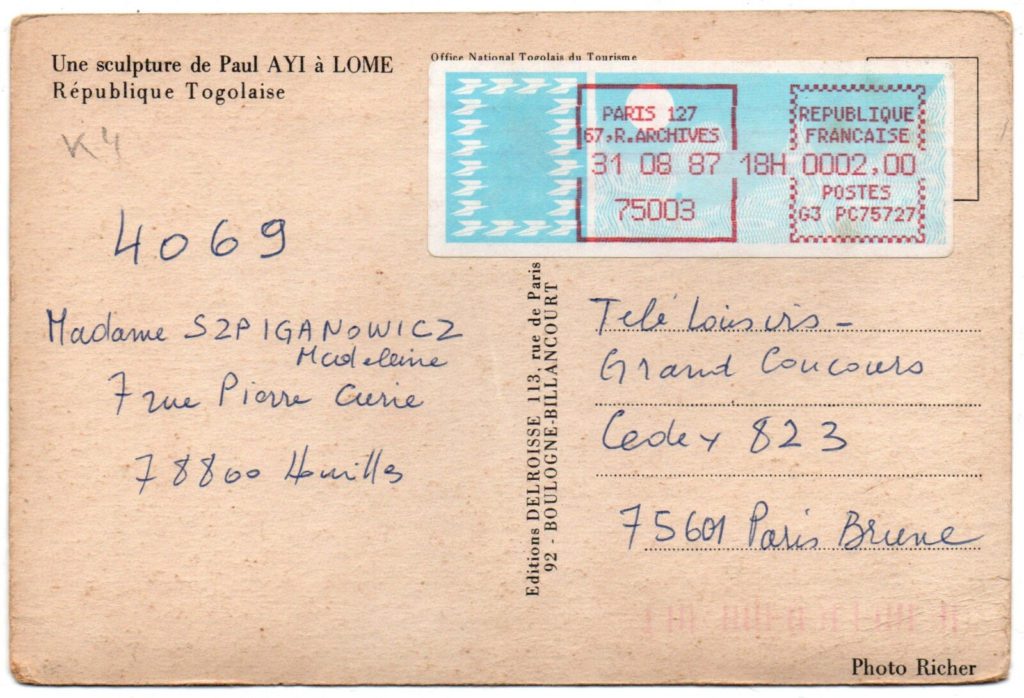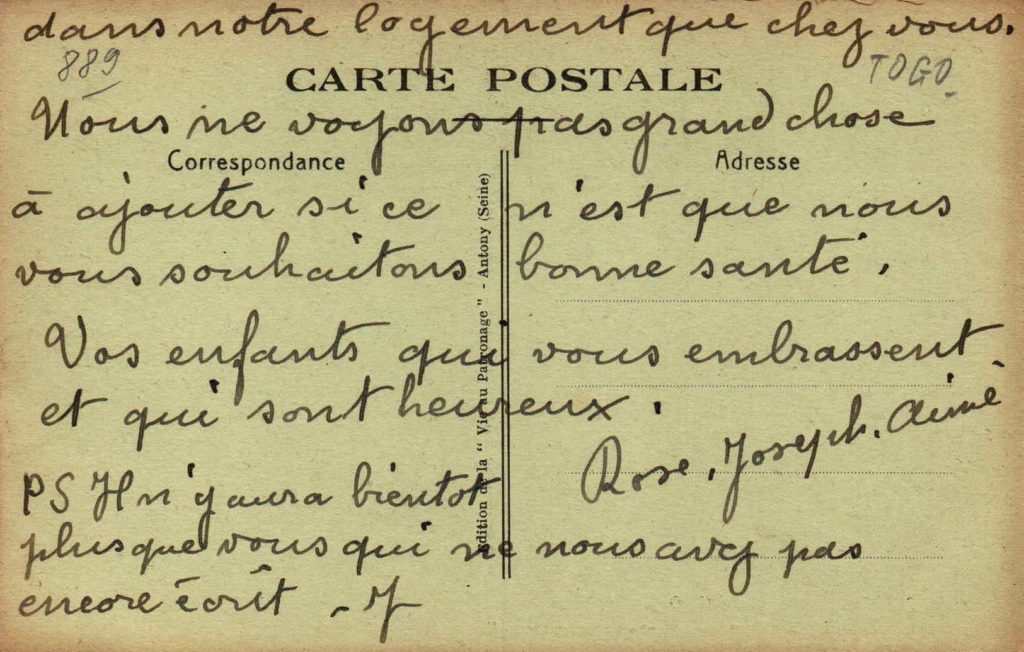Postcards offer a unique and personal glimpse into history. This blog post explores a series of postcards from Togo, written by foreigners in the colonial era, offering insights into the country’s culture and surroundings as perceived by those not native to it.
Pokti: a Moba war dance
The first postcard features the ‘Pokti Dance’, a traditional Moba war dance from Dapaong. The message on the back reveals the sender’s travels and their appreciation for the vibrant experiences encountered in Togo. The note ends with an anticipation of sharing stories upon return and hints at future journeys.

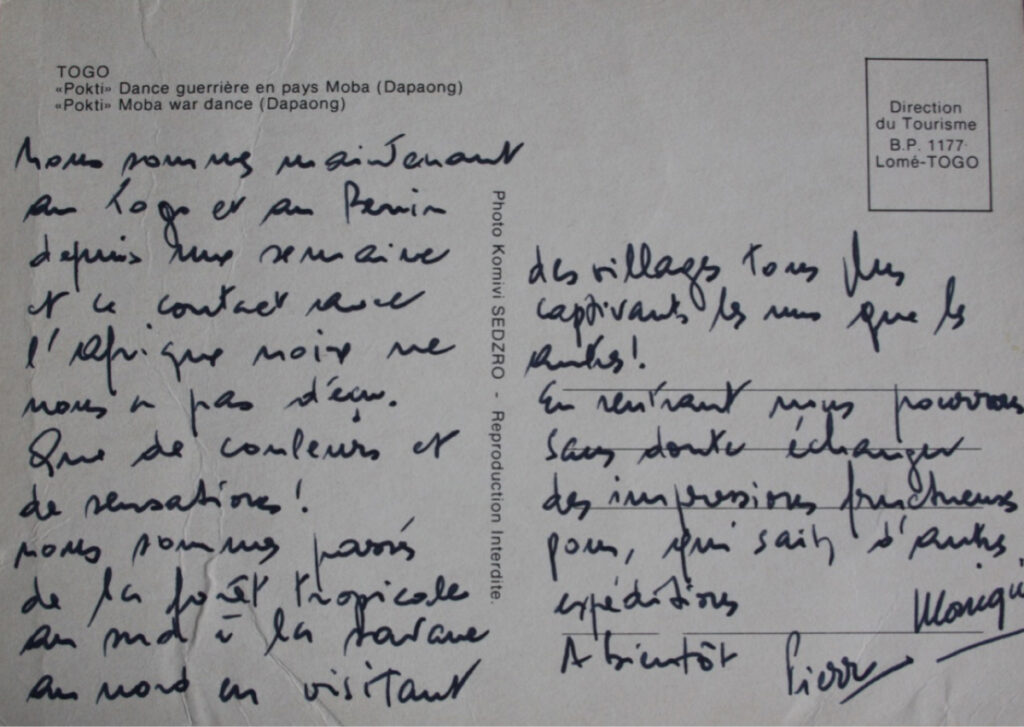
The text, written in French, reads as follows:
TOGO
«Pokti» Dance guerrière en pays Moba (Dapaong)
«Pokti» Moba war dance (Dapaong)
Nous sommes maintenant au Togo et au Bénin depuis huit semaines et ce contact avec l’Afrique noire ne nous a pas déçus. Tant de couleurs of de sensations! Nous sommes passés de la forêt tropicale au sud à la savane au nord en visitant des villages tous très captivants les uns que les autres.
En rentrant nous pourons sans doute échanger des […] pour, qui sais d’autres expéditions.
À bientot
War Memorial postcard
This postcard is a personal note to an individual named Simone. The writer refers to the ‘Monument aux morts’, a war memorial, and points out a hand-drawn black and red cross that marks the location of ‘their’ bank, The Central Bank of West African States (BCEAO). Another illustration is used to represent the location of the Ministry of Foreign Affairs. The sender expresses approval of the country’s condition, noting “Le Togo n’est pas mal!” which translates to: “Togo’s not bad.”
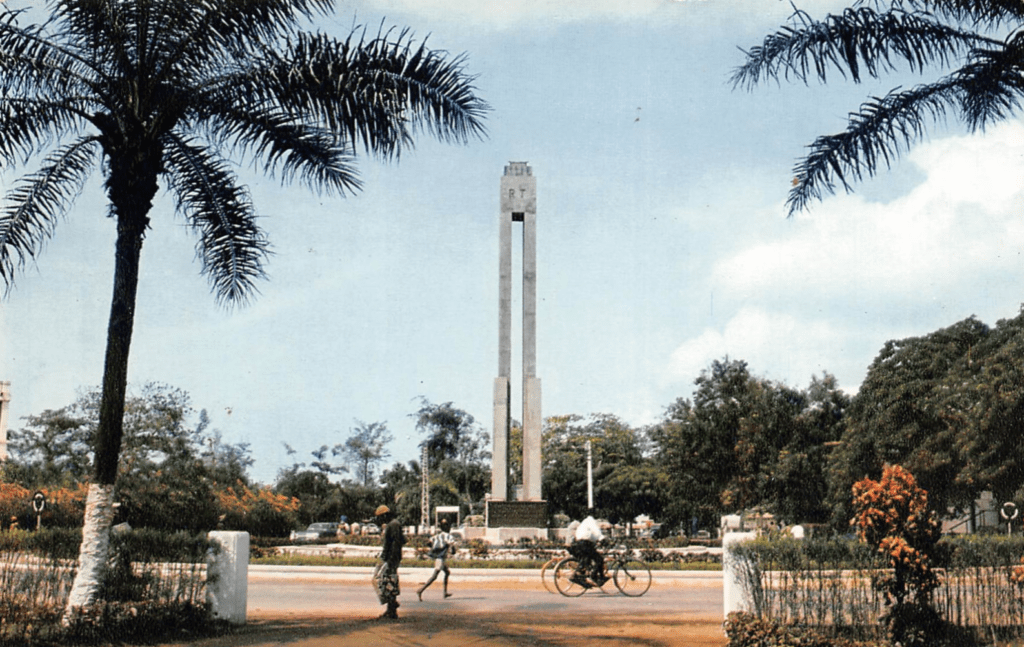
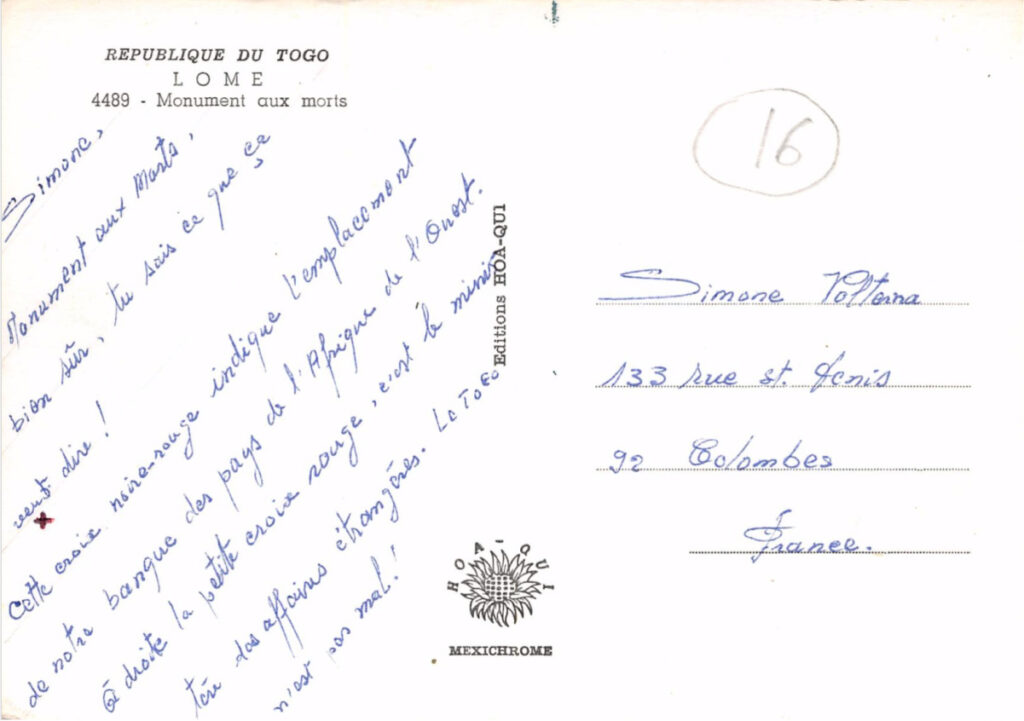
The text on the postcard reads as follows:
REPUBLIQUE DU TOGO
LOME
4489 – Monument aux mortsSimone,
Monument aux morts.Bien sûr, tu sais ce que ça veut dire!
Cette croix noire-rouge indique l’emplacement de notre banque des pays de l’Afrique de l’Ouest. À droite la petite croix rouge, c’est le ministère des affaires étrangères. Le Togo n’est pas mal!Simone Poltana
133 Rue st denis.
92 Colombes
France
Tam-tam du diable
Another postcard titled ‘Tam-Tam du Diable’ is addressed to a physician in France. The written content makes a comparison between African drumming traditions and modern city noises. It discusses the impact of noise on the nerves and endorses using natural materials to maintain nerve health. The postcard contains ads featuring Ionyl, a medication advertised to treat insomnia.
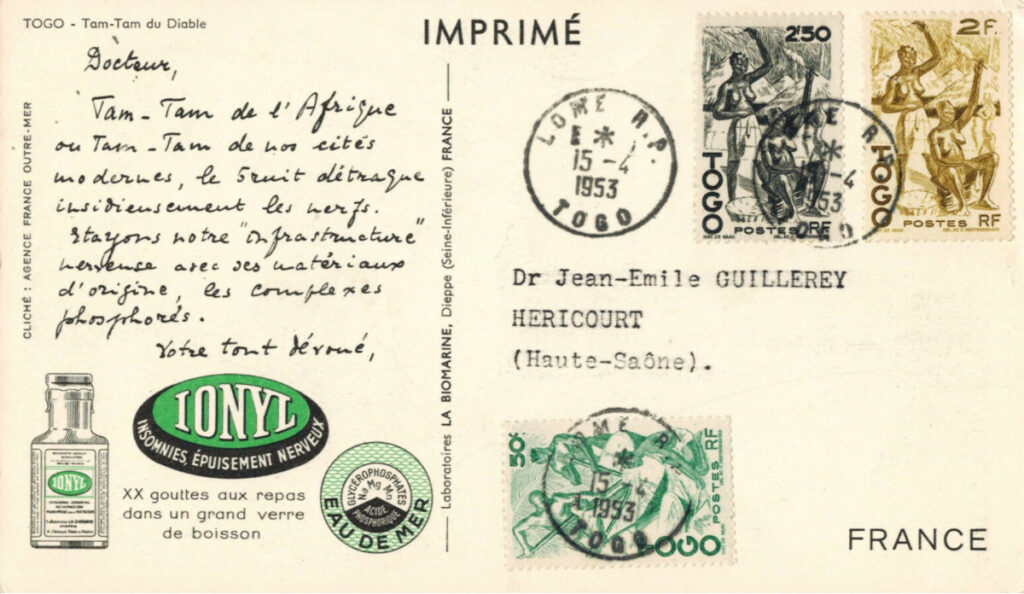
TOGO – Tam-Tam du Diable
Docteur,
Tam-Tam de l’Afrique
ou Tam-Tam de nos cités
modernes, le bruit détraque
insidieusement les nerfs.
Stayons notre “infrastructure”
nerveuse avec ses matériaux
d’origine, les complexes
phosphorés.Votre tout dévoué,
[Advertisement]
IONYL
INSOMNIES ÉPUISEMENT NERVEUXXX gouttes aux repas
dans un grand verre de boisson[Seal of the product]
GLYCÉROPHOSPHATE
ACIDE PHOSPHORIQUELaboratoires LA BIOMARINE – DIEPPE (Seine-Inférieure) FRANCE
Insights from postcards as historical artifacts
These postcards serve as valuable historical artifacts, offering insights into how outsiders conveyed their perceptions of the local culture and environment to external audiences. The personal stories within these postcards deepen our understanding of the colonial strategies that emerged during that era.
